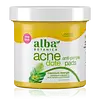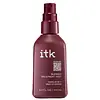What's inside
What's inside
 Key Ingredients
Key Ingredients

 Benefits
Benefits

 Concerns
Concerns

 Ingredients Side-by-side
Ingredients Side-by-side

Salicylic Acid 2%
MaskingWater
Skin ConditioningAlcohol Denat.
AntimicrobialAloe Barbadensis Leaf Juice
Skin ConditioningHamamelis Virginiana Water
AstringentGlycerin
HumectantSorbitol
HumectantAlcohol
AntimicrobialCamellia Sinensis Leaf Extract
AntimicrobialCarum Petroselinum Extract
Skin ConditioningChamomilla Recutita Flower Extract
MaskingGlycyrrhiza Glabra Root Extract
BleachingMelissa Officinalis Leaf Extract
Skin ConditioningThymus Vulgaris Flower/Leaf Extract
MaskingCitric Acid
BufferingDenatonium Benzoate
MaskingSodium PCA
HumectantT-Butyl Alcohol
PerfumingPhenoxyethanol
PreservativePotassium Sorbate
PreservativeSodium Benzoate
MaskingCitrus Aurantium Bergamia Fruit Oil
MaskingCitrus Aurantium Dulcis Peel Oil
MaskingMentha Piperita Oil
MaskingLimonene
PerfumingLinalool
PerfumingSalicylic Acid 2%, Water, Alcohol Denat., Aloe Barbadensis Leaf Juice, Hamamelis Virginiana Water, Glycerin, Sorbitol, Alcohol, Camellia Sinensis Leaf Extract, Carum Petroselinum Extract, Chamomilla Recutita Flower Extract, Glycyrrhiza Glabra Root Extract, Melissa Officinalis Leaf Extract, Thymus Vulgaris Flower/Leaf Extract, Citric Acid, Denatonium Benzoate, Sodium PCA, T-Butyl Alcohol, Phenoxyethanol, Potassium Sorbate, Sodium Benzoate, Citrus Aurantium Bergamia Fruit Oil, Citrus Aurantium Dulcis Peel Oil, Mentha Piperita Oil, Limonene, Linalool
Salicylic Acid 2%
MaskingWater
Skin ConditioningAlcohol Denat.
AntimicrobialButylene Glycol
HumectantPPG-26-Buteth-26
Skin ConditioningPEG-40 Hydrogenated Castor Oil
EmulsifyingPhenoxyethanol
PreservativeGlycerin
HumectantMentha Piperita Oil
MaskingSodium Hydroxide
BufferingGlycyrrhiza Glabra Root Extract
BleachingMenthol
MaskingT-Butyl Alcohol
PerfumingDenatonium Benzoate
MaskingLimonene
PerfumingLinalool
PerfumingIngredients Explained
These ingredients are found in both products.
Ingredients higher up in an ingredient list are typically present in a larger amount.
Alcohol Denat. is an alcohol with a denaturant property. It is created by mixing ethanol with other additives.
This ingredient gets a bad rep because it is irritating and drying - mostly due to its astringent property. Astringents draw out natural oils in tissue, constricting pores and leaving your skin dried out.
However, alcohol denat. is not all that bad.
Due to its low molecular weight, alcohol denat. tends to evaporate quickly. One study on pig skin found half of applied alcohol evaporated in 10 seconds and less than 3% stayed on skin.
This also helps other ingredients become better absorbed upon application.
Studies are conflicted about whether this ingredient causes skin dehydration. One study from 2005 found adding emollients to propanol-based sanitizer decreased skin dryness and irritation. Another study found irritation only occurs if your skin is already damaged.
Small amounts of alcohol are generally tolerated by oily skin or people who live in humid environments.
The rule of thumb is if this alcohol is near the end of an ingredients list, it will probably not affect your skin much.
Also...
This ingredient has antimicrobial and solvent properties.
The antimicrobial property helps preserve products and increase their shelf life. As a solvent, it helps dissolve other ingredients.
Other types of astringent alcohols include:
Learn more about Alcohol Denat.Denatonium Benzoate is a denaturant and masking ingredient.
It is commonly used to denature alcohols, such as SD Alcohol 40.
Fun fact: This ingredient is the most bitter known compound. The bitter flavor is often used to deter consumption.
Learn more about Denatonium BenzoateGlycerin is already naturally found in your skin. It helps moisturize and protect your skin.
A study from 2016 found glycerin to be more effective as a humectant than AHAs and hyaluronic acid.
As a humectant, it helps the skin stay hydrated by pulling moisture to your skin. The low molecular weight of glycerin allows it to pull moisture into the deeper layers of your skin.
Hydrated skin improves your skin barrier; Your skin barrier helps protect against irritants and bacteria.
Glycerin has also been found to have antimicrobial and antiviral properties. Due to these properties, glycerin is often used in wound and burn treatments.
In cosmetics, glycerin is usually derived from plants such as soybean or palm. However, it can also be sourced from animals, such as tallow or animal fat.
This ingredient is organic, colorless, odorless, and non-toxic.
Glycerin is the name for this ingredient in American English. British English uses Glycerol/Glycerine.
Learn more about GlycerinGlycyrrhiza Glabra Root Extract is an extract of the roots of Licorice. It has been found to have several benefits such as skin hydrating, conditioning, and soothing.
One component, glabridin, has extra potent antioxidant and soothing properties. It has also been found to block pigmentation from UVB rays in guinea pigs.
Licorice Root also contains a flavonoid. Flavonoids are a natural substance from in plants. Flavonoids also have antioxidant properties.
Another component, glycyrrhizin, has been found to have anti-inflammatory and antimicrobial benefits. This may make licorice root extract effective at treating acne. However, more research is needed to support this.
Liquiritin is one of the flavone compounds found in licorice. It has been found to help lighten skin by preventing tyrosinase from reacting with tyrosine. When the two react, protein is converted to melanin. Melanin is the substance in your body that gives your features pigmentation.
Learn more about Glycyrrhiza Glabra Root ExtractLimonene is a fragrance that adds scent and taste to a formulation.
It's found in the peel oil of citrus fruits and other plants such as lavender and eucalyptus. The scent of limonene is generally described as "sweet citrus".
Limonene acts as an antioxidant, meaning it helps neutralize free radicals.
When exposed to air, oxidized limonene may sensitize the skin. Because of this, limonene is often avoided by people with sensitive skin.
The term 'fragrance' is not regulated in many countries. In many cases, it is up to the brand to define this term. For instance, many brands choose to label themselves as "fragrance-free" because they are not using synthetic fragrances. However, their products may still contain ingredients such as essential oils that are considered a fragrance.
Learn more about LimoneneLinalool is a fragrance and helps add scent to products. It's derived from common plants such as cinnamon, mint, citrus, and lavender.
Like Limonene, this ingredient oxidizes when exposed to air. Oxidized linalool can cause allergies and skin sensitivity.
This ingredient has a scent that is floral, spicy tropical, and citrus-like.
Learn more about LinaloolMentha Piperita Oil is the volatile oil obtained from the whole plant of the Peppermint plant.
It can be used to add a fresh scent to products.
Peppermint oil may cause skin sensitivity and redness due to its menthol content. Menthol also has a cooling effect (like your toothpaste).
Learn more about Mentha Piperita OilPhenoxyethanol is a preservative that has germicide, antimicrobial, and aromatic properties. Studies show that phenoxyethanol can prevent microbial growth. By itself, it has a scent that is similar to that of a rose.
It's often used in formulations along with Caprylyl Glycol to preserve the shelf life of products.
Salicylic Acid (also known as beta hydroxy acid or BHA) is a well-known ingredient for treating skin that struggles with acne and clogged pores. It exfoliates both the skin's surface and deep within the pores to help clear out buildup, control oil, and reduce inflammation.
Unlike AHAs (alpha hydroxy acids), salicylic acid is oil-soluble. This allows it to penetrate into pores which makes it especially effective for treating blackheads and preventing future breakouts.
Salicylic acid is also known for its soothing properties. It has a similar structure to aspirin and can calm inflamed or irritated skin, making it a good option for acne-prone skin that is also sensitive.
Concentrations of 0.5-2% are recognized by the U.S. FDA as an over-the-counter topical acne product.
It can cause irritation and/or dryness if one's skin already has a compromised moisture barrier, so it's best to focus on repairing that before introducing this ingredient into your routine.
While salicylic acid does not increase sun sensitivity, it’s still important to wear sunscreen daily to protect your skin.
If you are looking for the ingredient called BHA or Butylated Hydroxyanisole, click here.
Learn more about Salicylic AcidT-Butyl Alcohol it is most commonly used as a solvent.
At room temperature, T-Butyl Alcohol melts and has a similar smell to camphor.
This ingredient is derived from isobutane. It is the simplest form of a tertiary alcohol. Due to its chemical structure, it is more resistant to oxidation.
Some sources online claim T-Butyl Alcohol is a fatty alcohol. However, it is not considered one due to its chemical structure.
Learn more about T-Butyl AlcoholWater. It's the most common cosmetic ingredient of all. You'll usually see it at the top of ingredient lists, meaning that it makes up the largest part of the product.
So why is it so popular? Water most often acts as a solvent - this means that it helps dissolve other ingredients into the formulation.
You'll also recognize water as that liquid we all need to stay alive. If you see this, drink a glass of water. Stay hydrated!
Learn more about Water